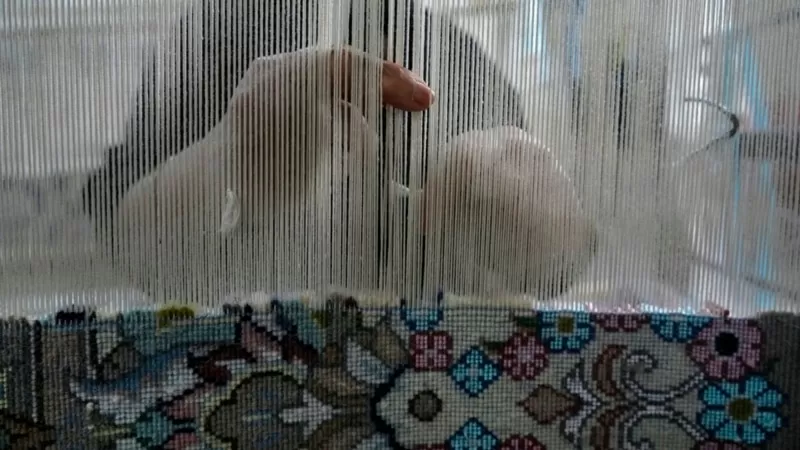KASHAN, Iran — The ancient city of Kashan, located in central Iran, is known for its rich history and cultural heritage. One of its most famous landmarks is the Kashan bazaar, which was once a bustling hub on a major caravan route. The bazaar was renowned for its exquisite silk carpets, which were highly sought after by people from all over the world. However, since the collapse of Iran’s nuclear deal with world powers and the rise of tensions with the West, the world of the weavers who sell their rugs under the bazaar’s ancient arches has been turned upside down.
According to government customs figures, rug exports, which were once valued at over $2 billion, have plummeted to less than $50 million in the last year. This has had a devastating impact on the weavers, who now struggle to sell their rugs and make a living. With fewer tourists visiting the bazaar and difficulties in making international transactions, the once thriving rug industry is now facing a major crisis. Some weavers are even working for as little as $4 a day, which is barely enough to survive.
Ali Faez, the owner of a dusty carpet shop at the bazaar, laments the loss of American customers, who were some of the best buyers of Iranian rugs. He says, “Rugs are a luxury product and they were eager to buy it and they used to make very good purchases. Unfortunately, this has been cut — and the connection between the two countries for visitors to come and go has gone away.”
The rug-weaving industry in Kashan is an integral part of the city’s cultural heritage and has even been inscribed in UNESCO’s list of the world’s “intangible cultural heritage.” Many of the weavers are women, who have inherited the skills needed for the Farsi weaving style from their ancestors. They use materials such as vine leaves, pomegranate fruit skins, and walnuts to create the vibrant dyes for their threads. It takes months of hard work and dedication to create a single rug.
For decades, Western tourists would visit Iran and purchase these beautiful rugs as gifts or souvenirs. However, after the 1979 Islamic Revolution and the subsequent increase in sanctions by the U.S., the import of Iranian goods, including rugs, was banned. In 2000, the ban was lifted by the outgoing administration of former President Bill Clinton, which was seen as a positive step towards reducing tensions between the two countries. But in 2010, with concerns over Iran’s nuclear program, the U.S. once again banned the import of Persian rugs. This ban was lifted in 2015 when Iran signed a nuclear deal with world powers, allowing the rug trade to resume.
However, in 2018, the U.S. unilaterally withdrew from the nuclear deal, leading to renewed sanctions on Iran. This has once again resulted in the ban of Iranian-made Persian rugs, causing a major blow to the already struggling industry. Abdullah Bahrami, the head of a national syndicate for handwoven rug producers, blames the collapse of the industry on the Trump sanctions. He says that the value of exports to the U.S. was as high as $80 million annually before the sanctions were imposed.
The decline in tourism to Kashan has also contributed to the crisis. The city used to attract high-value American and European tourists, but this has largely stopped due to the political tensions. Ezzatollah Zarghami, Iran’s minister of tourism, claims that 6 million tourists visited the country in the last 12 months, but this number likely includes religious pilgrims and visitors from neighboring countries with less spending power. Furthermore, the challenge of Iran’s financial system, where major international credit cards do not work, makes it difficult for tourists to make purchases.
Even those who do manage to visit Kashan and fall in love with the exquisite rugs face challenges in making payments. Faez shares the story of a Chinese customer who struggled to make the payment for a rug he loved. The weavers also face difficulties in receiving payments due to the limitations of the financial system. This has led to many canceled orders as customers are unable to make payments.
The collapse of the rial currency has also made it difficult for Iranians to afford the handwoven rugs. The wages in the industry are low, leading to an increase in Afghan migrants working in workshops around Kashan. J










